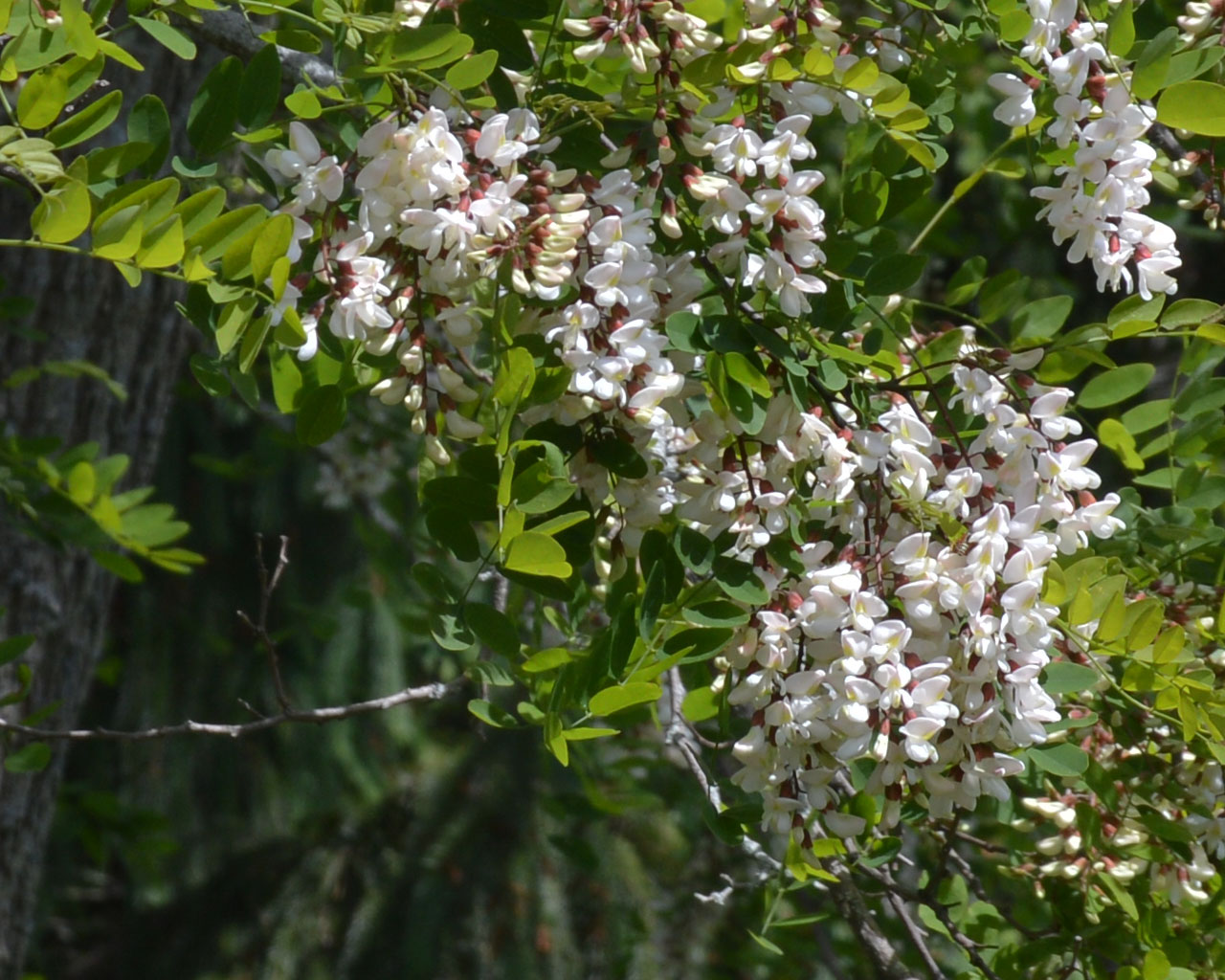Black Locust

Many years ago during a Summer drought when mowing the yard became unnecessary for a couple of weeks, this tree became prominent in the yard. When rain returned and the yard wanted mowing, on a whim, I cut around the tree and let it grow.
Now, taller than the house it grows north of, this tree has become somewhat of an indicator of just how fast decades pass.
Wikipedia reports:
The black locust is native to the eastern United States, but the exact native range is not accurately known as the tree has been cultivated and is currently found across the continent, in all the lower 48 states, eastern Canada, and British Columbia. The native range is thought to be two separate populations, one centered about the Appalachian Mountains, from Pennsylvania to northern Georgia, and a second westward focused around the Ozark Plateau and Ouachita Mountains of Arkansas, Oklahoma and Missouri.
Black locust’s current range has been expanded by humans distributing the tree for landscaping and now includes Australia, Canada, China, Europe, India, Northern and South Africa, temperate regions in Asia, New Zealand, Southern South America.[8]
Black locust is an interesting example of how one plant can be considered an invasive species even on the same continent it is native to. For example, within the western United States, New England region, and in the Midwest, black locust is considered an invasive species. In the prairie and savanna regions of the Midwest black locust can dominate and shade open habitats.[9] These ecosystems have been decreasing in size and black locust is contributing to this, when black locust invades an area it will convert the grassland ecosystem into a forested ecosystem where the grasses are displaced.[10] Black locust has been listed as invasive in Connecticut and Wisconsin, and prohibited in Massachusetts.[1]
In Australia black locust has become naturalized within Victoria, New South Wales, South, and Western Australia. It is considered an environmental weed there.[8] In South Africa, it is regarded as a weed because of its habit suckering


